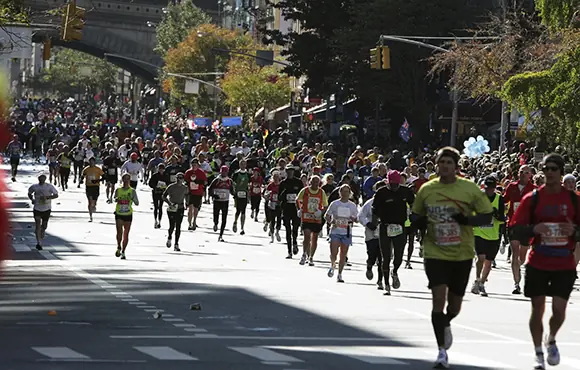Finding Your Baseline
The first thing I needed to do was establish my training zones, which are based on maximum and resting heart rates. It seemed simple enough but estimating your maximum heart rate is tricky. Many people think: Maximum Heart Rate = 220-Age. But researchers have discredited this estimate, replacing it with these equations:
Male Maximum Heart Rate = 214 - (0.8*age)
Female Maximum Heart Rate= 209 - (0.7*age)
This is still a gross estimate (and I hate math), so I decided to ask a heart rate and running expert who recommended I give the Wahoo TICKR FIT Armband a whirl. I was pleased that it didn't have to go around my chest, since the traditional monitors give me that "trapped in a sweater" feeling and sometimes chafe. So I fastened the small monitor to my forearm, pressed the button and signed into the Wahoo Fitness App.
Once in the app, you can give yourself two tests to determine your heart rate levels. First, you can sit back and relax for a minute and let that determine your zones. Then, if you want to get really accurate, you can go through a series of exercises to get your heart really pumping.
When I was done with the test, I saw that my easy day heart rate should be 150 and my working heart rate is 178.
Read More: Knowing Your Top and Bottom Heart Rate Is Key to Training Right
Getting in the Zones
Each running workout requires you to run at a certain effort level or, more specifically, a specific heart rate. Armed with my ranges, I was ready to figure out when I should be running at my easy heart rate and when I should be running at my working heart rate.
Recovery Training Zone
Your recovery, or easy training zone, is the heart rate and pace where you should do the majority of your miles. It's important because it allows your body to heal itself after muscle breakdown from tough workouts. I needed to get right in the sweet spot of my recovery heart rate range for these runs. On these runs, I try to keep my heart rate at or below 150.
Aerobic Training Zone
In this zone, your pace should be just quick and hard enough that your breathing is labored. If you're an experienced runner who is marathon training, consider this your go-to pace for your long runs. For these, I amp up to 160.
Tempo Torture
Heart rate training is a great tool for tempo training because it helps you stay on the proper side of that fine line between just enough lactic acid production and too much. So what should my heart rate be in this zone? Slightly below anaerobic zone. So my heart rate here is around 170.
Anaerobic Training Zone
The anaerobic training zone is most commonly referred to as speed work or VO2 max work. This zone would be reserved for my days on the track. Heart rate training in this zone is near maximum, and you should only be able to run at two or three minutes maximum before your body gives out. Here, I push to my "working" heart rate.
- 2
- of
- 3
Get ACTIVE on the Go


Couch to 5K®
The best way to get new runners off the couch and across the finish line of their first 5K.
Available for iOS | Android






Discuss This Article